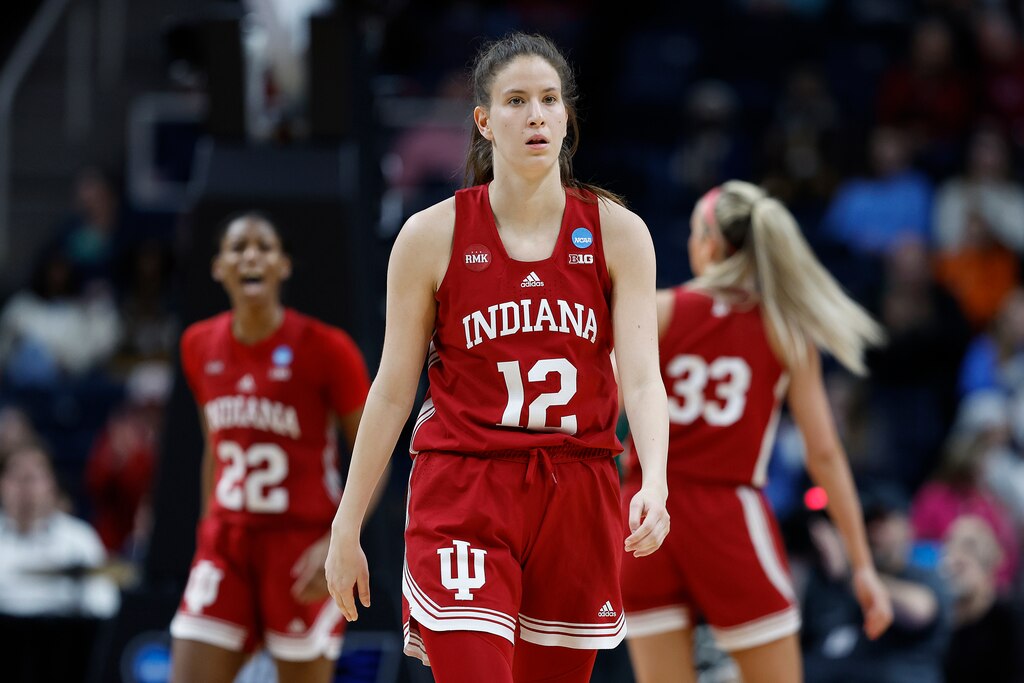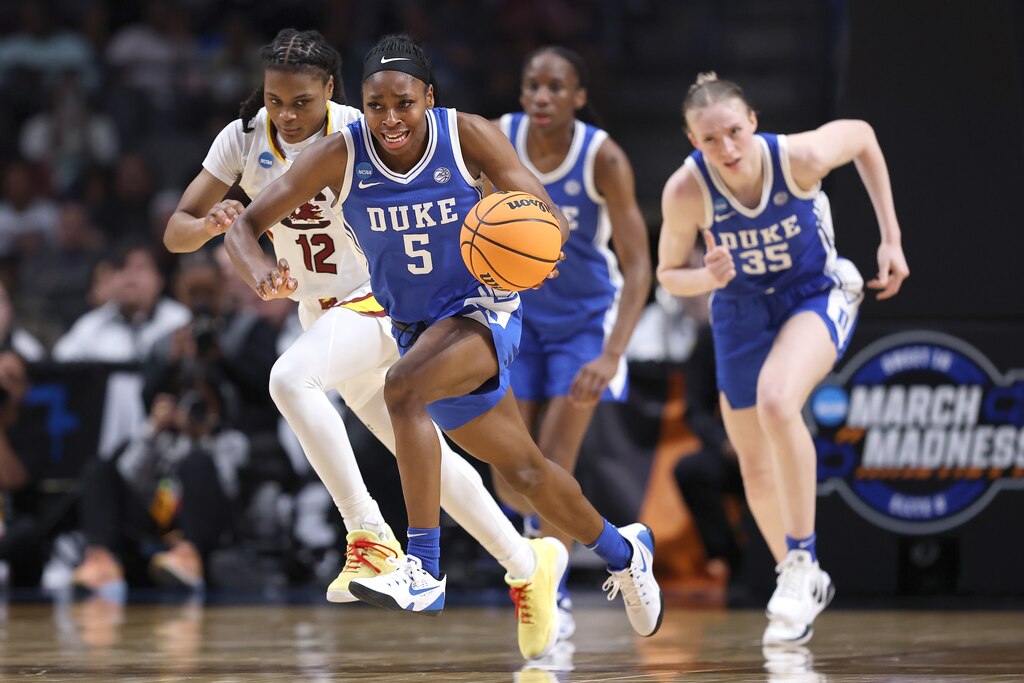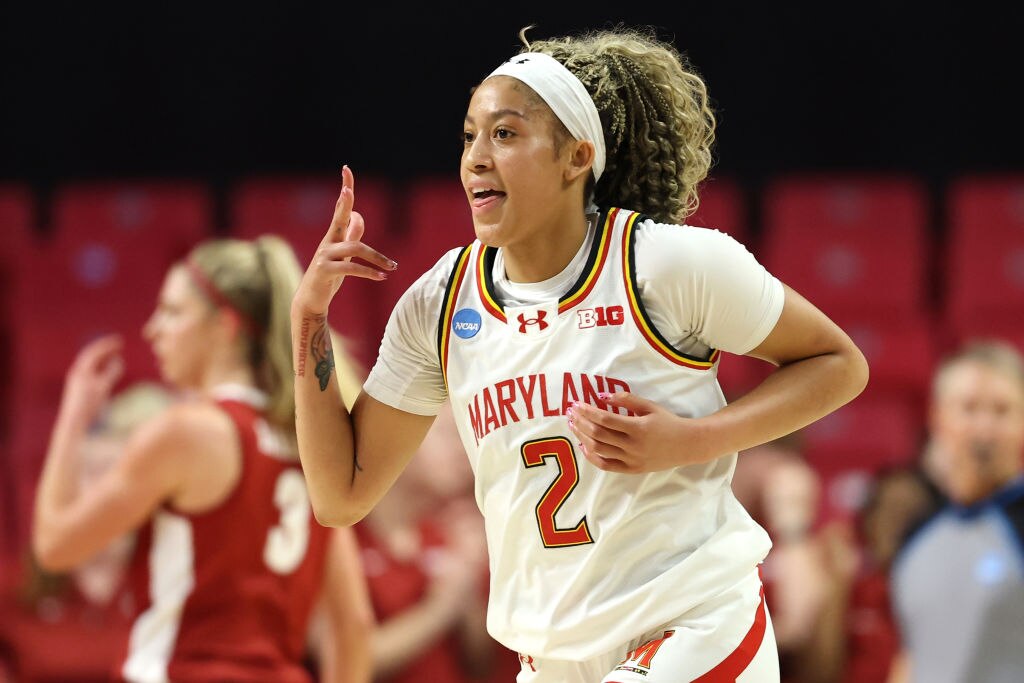It was around 9 o’clock Eastern on a night in April when Brenda Frese called her latest transfer portal target to pitch a whirlwind suggestion.
Yarden Garzon, a three-year standout and the all-time 3-point leader at Indiana, had been talking with Frese on the phone and liked what she was hearing. So then, Maryland’s coach asked, Why don’t we get you on a visit to College Park? Could you fly out tomorrow morning?
Garzon was game — but had an added request. Could her sister, Lior, in Boulder, Colorado, join the visit? The Israel native wanted to see Maryland, but she wanted another pair of eyes she could trust at her side.
No problem, Frese said. The Terps would make it happen.
The Baltimore Banner thanks its sponsors. Become one.
The next day, Garzon flew in from Indiana, took a car service to College Park and by midday was enjoying lunch with her sister — whom she hadn’t expected to see until Passover later in the month. It was days later that Garzon, with her family’s blessing, committed to Maryland, where she took her only official visit.
“We had this conversation that was really great, and it was fun to hear from the players and the whole staff,” she said. “The most important thing at the end of the day is the people.”
That’s always been a truism when it comes to recruiting in college sports. But now, with drastic changes caused by the loosening of transfer rules and proliferation of name, image and likeness dollars, building championship teams often comes down to speed.
Relationships once unfurled over years of recruiting and were cemented with long-planned and relatively relaxed campus visits. The new environment forces coaches to forge bonds quickly, often on a player’s terms.
Frese and her staff have adapted well to the NCAA’s Wild West era, which saw more than 1,300 Division I women’s basketball players enter the portal this offseason. Last month, the Terps signed Garzon and Duke’s Oluchi Okananwa, ESPN’s No. 7- and No. 11-ranked available players, respectively. The acquisitions come on the heels of a season when Maryland went to the Sweet 16 and finished with a No. 12 Associated Press ranking on a team built largely with transfers — many of whom return next season.
The Baltimore Banner thanks its sponsors. Become one.
Entering her 24th season at Maryland, Frese says she’s “hesitant to say we’ve mastered” the transfer portal process, but the Terps are clearly doing something right. Their success has come amid a modern-day process that is so tense and fast-paced that Frese calls the recruiting window more stressful than March Madness.
On a recent Wednesday, Frese told her husband she could come up to Pittsburgh for the weekend to watch her twin sons play in their own basketball tournament. By Thursday, she was forced to recant. She had to recruit. Things change that fast.

“April is by far more intense than March now,” she said. “It’s the transfer portal. It’s how quickly things move. You might think you have tomorrow off, then by that night you have a visit scheduled in the morning.”
The trick for the Terps is making the process look smooth to the recruits. Bringing in a transfer portal target is like cramming for a final exam — and it takes a huge, cohesive team. Frese’s job is to get the recruit to say yes to the visit, then she hands things off to Lindsey Spann and Noelle Cobb, her assistants who handle the bulk of recruiting tasks: “I don’t think they get any sleep on those nights.”
There’s some sleep, Spann said, but not a lot. Once she and Cobb get a green light that a recruit is coming in less than 24 hours, they have to figure out all the logistics. They see which coaches and players are free the next day to meet. They coordinate with the compliance department. They see which airports are closest to the recruit and which flights are available in the morning, and they arrange the car service to pick them up.
The Baltimore Banner thanks its sponsors. Become one.
“We’re using a lot of that midnight oil,” Spann said.
Coaches are also responsible for showing how much work they’ve done scouting the recruit, which played a huge role in Okananwa’s decision to come to Maryland. Like Garzon’s, her official visit was scheduled the night before it happened. When Okananwa — a rising junior whom the Terps had recruited in high school before she committed to Duke — flew in from Durham, North Carolina, she was overwhelmed by the reams of notes the Terps had taken about her game.

“You talk about quick turnaround time — everything’s already laid out, everything’s already done,” Okananwa said. “There’s all these printed sheets going into detail about where I can improve, where they see me in the offense, where they see my game going all the way into the professional league — which is my dream. It was just so meticulously thought out and planned.”
Spann appreciated the positive feedback. In Okananwa’s case, it helped the staff that the Terps had played Duke in November and had scouting notes to use as a reference point. But creating the perfect package requires calibrating to the recruit’s goals: “We tailor these to her specific needs and situation, so when they come in they can see we know their game.”
Preexisting knowledge also put the Terps in strong position to recruit Garzon, who had challenged them in Big Ten play with the Hoosiers. Like Okananwa, Garzon’s dream is to be a pro player — “it’s not a secret, this is the main reason I came to the U.S.,” she said — but Maryland has other ways to sell that, too.
The Baltimore Banner thanks its sponsors. Become one.
One of the most impactful conversations Garzon had before committing was with Abby Meyers, herself a 3-point shooter who transferred in for a graduate season at Maryland in 2022 and has played professionally overseas, including in Israel.
“She came to Maryland for one year, which is basically my situation,” Garzon said. “She had amazing stuff to say about Coach Brenda and the staff — nothing bad to say about them.”
In Garzon’s case, Maryland’s substantial Jewish community also played a role in her decision to transfer. “It’s a big part of my identity, and I’m really proud of it.”
Some of these “fit” factors may seem antiquated or even besides the point in the modern era, because athletes also now negotiate NIL deals when they sign at schools. Cynics might believe only the highest dollar figure matters in a recruit’s decision. These market figures are closely guarded in part because schools want it that way. Notably, men’s coach Kevin Willard decried Maryland’s ability to compete in the NIL space, kicking dirt on the Terps before hightailing to Villanova.
Yet Maryland’s recruits say, although the money matters (and that the Terps are competitive in this space), it doesn’t matter most. Okananwa has an agent in her inner circle who advises her, but the top factor in committing to Maryland was Frese. “I trust Brenda to get me where I want to go.” The fact that Okananwa has already been at one school helps keep perspective that there are more important factors than how much money she can get.
The Baltimore Banner thanks its sponsors. Become one.
“It’s easy to get wrapped up and then you go to a place where you don’t fit as a player, because you didn’t pay as much attention to the basketball piece,” Okananwa said. “NIL is definitely something, but it’s coming underneath the part that’s about basketball. I’m going to get squared away with the categories that matter most.”
Not every swing is a home run. The Terps also thought as recently as the start of May that Gracie Merkle, a forward from Penn State, would bolster their frontcourt next year. Last week, Merkle announced she had decommitted from Maryland and would return to the Nittany Lions.
The Terps also lost depth up front when vet Allie Kubek announced she was transferring to Florida State. Just as quickly as the portal giveth, it can taketh away.
In the uncomfortable wake of Willard’s exit, Frese was asked many times throughout her March run about Maryland’s capacity to compete in the NIL space, and she’s only ever said that the Terps have gotten her what she needs. For Frese, the important part might just be that the components of her staff and support from the administration allow her to focus on what she does best: establishing relationships with recruits and players, and then coaching.
“I think we’re far ahead because of the team we’ve put together,” Frese said. “It allows me to do my job.”
The Baltimore Banner thanks its sponsors. Become one.
Maryland’s success in the transfer portal era is its own kind of advertising. Coaching in the NCAA tournament is stressful, Spann said, because the staff has more tasks to divvy up. Some will be assigned scouting for the next game; some will have to spend a few hours contacting recruits or keeping tabs on which players are entering the portal.

Going on a postseason run is advantageous, and when players see what the Terps did with transfers Kaylene Smikle (Rutgers), Sarah Te-Biasu (VCU) and Saylor Poffenbarger (Arkansas), it speaks to their ability to blend newcomers in. A 14-0 start to last season was a powerful endorsement of how Maryland builds cohesion on the fly.
Everything, from recruiting to team building, is on a shorter timeline now. NCAA structures have evolved (or devolved, depending on whom you ask) so quickly in the past three years that Frese said she’s seen more change in that period than in her previous three decades of coaching. But however college sports zigs, she’s ready to zag. The Terps have managed the transition well.
“You hope it settles in at some point to a new normal,” Frese said. “But I just roll up my sleeves and go with what’s in front of me. I just dig in.”




Comments
Welcome to The Banner's subscriber-only commenting community. Please review our community guidelines.